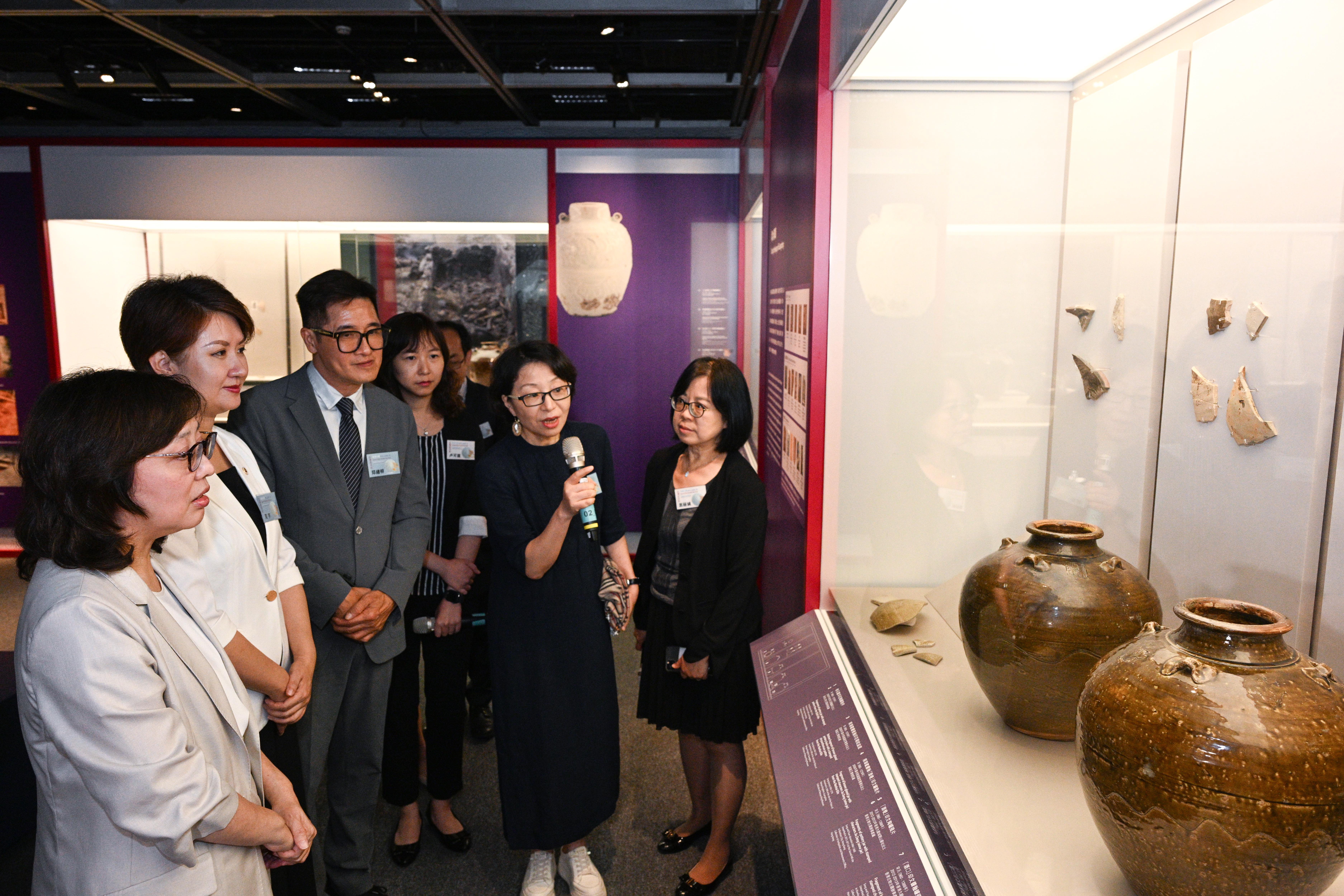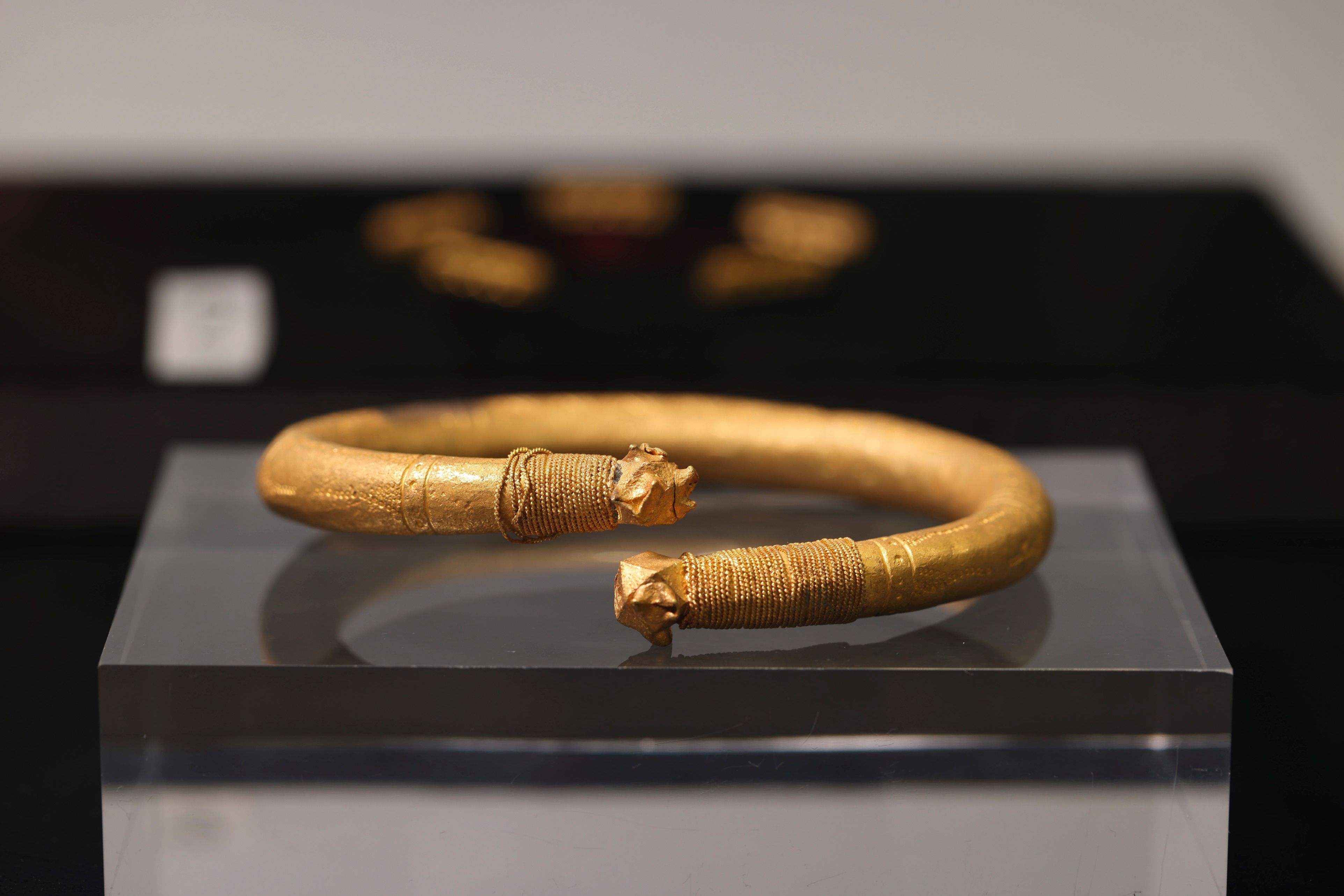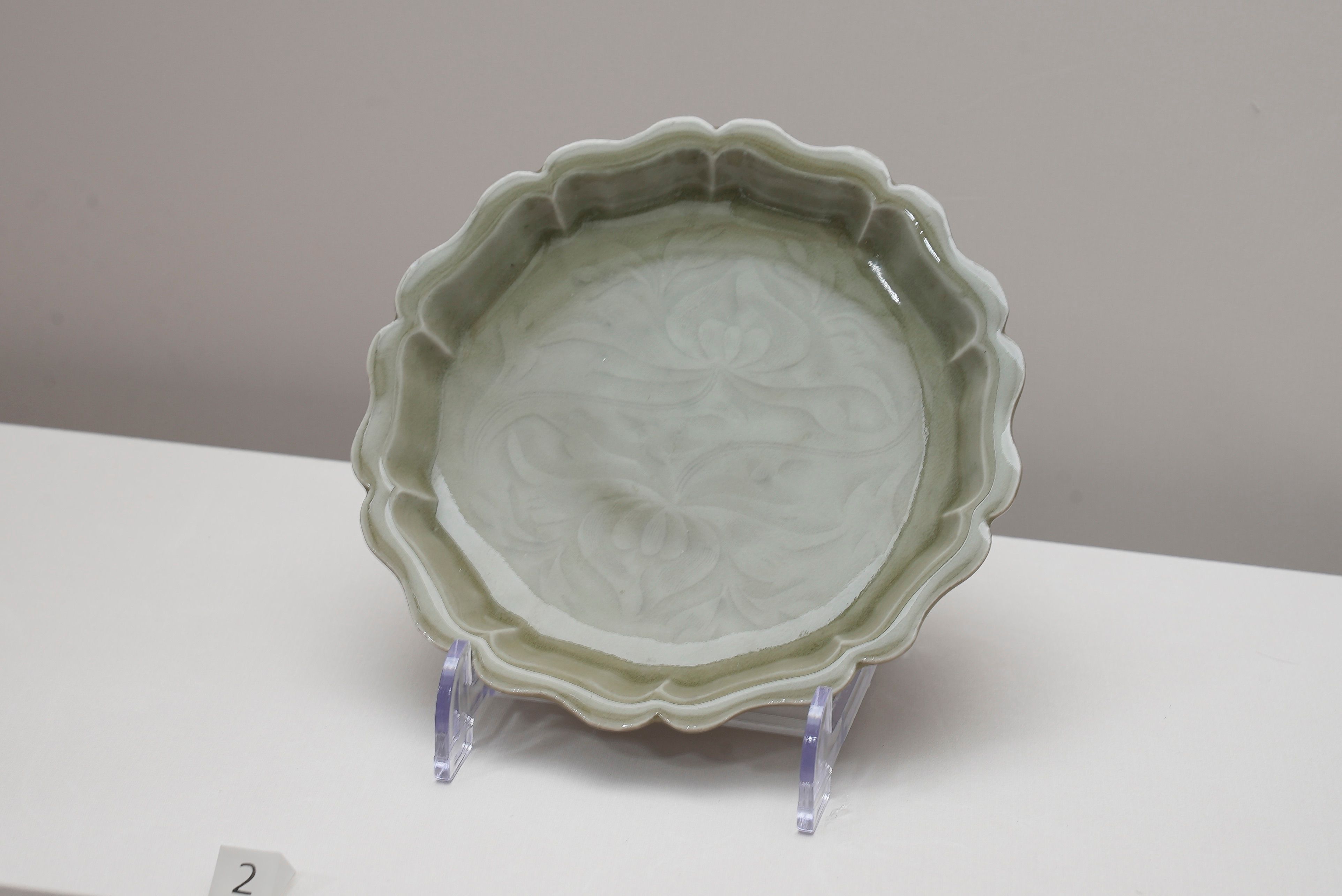
 |
| The exhibition entitled "Launch from Greater Bay Area: Nanhai I Shipwreck and the Maritime Silk Road" opened on August 15. Photo shows the Secretary for Development, Ms Bernadette Linn (second right); the Deputy Director of Art Exhibitions China, Ms Zhou Yu (second left); the President of Guangdong Provincial Institute of Cultural Relics and Archaeology, Ms Cao Jin (first right); and the Vice President of the Cultural Affairs Bureau of the Government of the Macao Special Administrative Region, M |
 |
| The exhibition entitled "Launch from Greater Bay Area: Nanhai I Shipwreck and the Maritime Silk Road" opened on August 15. Photo shows the Secretary for Development, Ms Bernadette Linn (first left), the Deputy Director of Art Exhibitions China, Ms Zhou Yu (third right), and the Vice President of the Cultural Affairs Bureau of the Government of the Macao Special Administrative Region, Mr Cheang Kai-meng (second right) touring the exhibition. |
 |
| The exhibition entitled "Launch from Greater Bay Area: Nanhai I Shipwreck and the Maritime Silk Road" opened on August 15. Photo shows the Secretary for Development, Ms Bernadette Linn (first left), the Deputy Director of Art Exhibitions China, Ms Zhou Yu (second left), and the Vice President of the Cultural Affairs Bureau of the Government of the Macao Special Administrative Region, Mr Cheang Kai-meng (third left) touring the exhibition. |
 |
| Brown glazed jar with four lugs and stamped Chinese characters "Chun Xi Shi Nian" (i.e. the tenth year of the Chunxi reign) from Nanhai kiln. The inscription on the jar is crucial for determining when the "Nanhai I" sank. |
 |
| Gem-set hollow gold bracelet with sophisticated techniques of Southern Song dynasty (1127-1279) unearthed at "Nanhai I", similar artefacts were also found at Riyadh, Saudi Arabi. |
 |
| Green glazed ogee-shaped foliated dish with incised lotus pattern of Southern Song dynasty (1127-1279) from Longquan kiln unearthed at "Nanhai I". |
The opening ceremony was officiated by the Secretary for Development, Ms Bernadette Linn; Deputy Director of Art Exhibitions China Ms Zhou Yu; the President of the Guangdong Provincial Institute of Cultural Relics and Archaeology, Ms Cao Jin; and the Vice President of the Cultural Affairs Bureau of the Government of the Macao Special Administrative Region, Mr Cheang Kai-meng.
Nanhai I was a merchant ship of the Southern Song dynasty. Its shipwreck was salvaged in 2007 and is the most complete ancient ocean-going merchant ship discovered through archaeological excavation to date. A large collection of artefacts was discovered from Nanhai I, mainly porcelain, bronzeware, ironware, gold, silverware, lacquerware and woodenware. The quantities, shapes, craftsmanship and forms of the artefacts are rare among the archaeological finds of the Southern Song dynasty. Archaeologists believe that Nanhai I might have sunk along the maritime route from Guangdong to the South China Sea in the 10th year of the Chunxi reign (1183) of the Southern Song dynasty or shortly afterwards.
Among the 255 items of exhibits are artefacts discovered from Nanhai I, including a brown glazed jar with four lugs and stamped with the Chinese characters 'Chun Xi Shi Nian' (i.e. the 10th year of the Chunxi reign) from the Nanhai kiln; a qingbai glazed foliated bowl with stamped plum blossom pattern from the Jingdezhen kiln; a green glazed ogee-shaped foliated dish with incised lotus pattern from the Longquan kiln; a necklace with gold chain and rhinoceros horn-shaped cone ornaments; and a gem-set hollow gold bracelet. Also on display are relevant exhibits unearthed from Guangdong, Hong Kong and Macao, including the bottom fragment of a qingbai glazed bowl with inked Chinese characters 'Gong Shi' (i.e. envoy) from the Hutian kiln of the Song dynasty from the site of the Nanyue Kingdom Palace in Guangzhou; a yellowish-green glazed jar with six lugs and dragon pattern of the Song dynasty from the site of the former Sacred Hill in Hong Kong; and a blue-and-white kendi with elephant head shaped spout from the Jingdezhen kiln of the Ming dynasty from the site of St. Paul's College in Macao.
The exhibition will run at the Hong Kong Heritage Discovery Centre, Kowloon Park, Haiphong Road, Tsim Sha Tsui, from August 16 to February 12 next year. Admission is free. A short video about the preparation of the exhibition is available on the website of the Antiquities and Monuments Office of the DEVB (www.amo.gov.hk/en/news/index_id_153.html?year=2024).
Copyright 2024 ACN Newswire . All rights reserved.
© 2024 JCN Newswire

